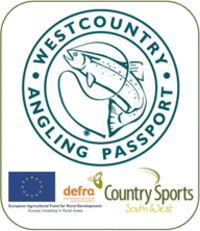Many thanks to Tipton Garage for facilitating this camera's location and to the Westcountry Rivers Trust for capitally funding its installation. The River Otter originates in the Blackdown Hills, located within Somerset, England near Otterford. It then flows southward through East Devon, ultimately reaching the English Channel at the western end of Lyme Bay, which forms part of the UNESCO World Heritage Site known as the Jurassic Coast. The Otter Valley houses a significant groundwater source in the form of the Permian and Triassic sandstone aquifer, supplying drinking water to approximately 200,000 individuals. The river's source lies north of Otterford, where a stream feeds the Otterhead Lakes (ST225152), eventually passing through Churchstanton before entering Devon.The river meanders through a predominantly rural area characterized by small cattle, sheep, and dairy farms. Honiton, the largest town in the Otter Valley, plays a central role in the local economy, with tourism and leisure contributing significantly. For a considerable stretch, the river traverses two Areas of Outstanding Natural Beauty (AONBs): the Blackdown Hills AONB to the north of Honiton and the East Devon AONB to the south of Ottery St Mary.As it flows, the River Otter passes through or near various locations, including Upottery, Rawridge, Monkton, Honiton, Alfington, Ottery St Mary, Tipton St John, Newton Poppleford, and Otterton, ultimately reaching the Otter Estuary to the east of Budleigh Salterton. The Otter Estuary Nature Reserve, spanning 57 acres (230,000 m2), is designated as a Site of Special Scientific Interest (SSSI) and comprises tidal mudflats and saltmarsh. While public access to the estuary itself is restricted, footpaths lead to two viewing platforms on the western side and two hides, one on the west and the other on the east. The reserve serves as a wintering ground for various wildfowl and waders, including common redshank, greenshank, dunlin, common sandpiper, ringed plover, grey plover, Eurasian curlew, common snipe, water rail, Eurasian wigeon, Eurasian teal, common shelduck, brent goose, red-breasted merganser, and little grebe. Additionally, bird species such as Eurasian reed warbler, reed bunting, and sedge warbler breed within the reserve.The Environment Agency operates multiple "river level stations" to monitor the water levels of the River Otter and its tributaries. The point where the river meets the coast (SY077820) is part of the Jurassic Coast, a recognized World Heritage Site. Another notable tributary is the River Tale, which converges with the Otter northwest of Ottery St Mary. This small town, associated with figures like Samuel Taylor Coleridge and Sir Walter Raleigh, hosts an annual tar barrel rolling event and features an unusual circular weir known as the Tumbling Weir. Budleigh Brook, yet another minor tributary, joins the Otter at East Budleigh.In the past, the River Otter powered numerous watermills, reaching a total of around fifty. Tracey Mill near Honiton, estimated to date back to the 17th century, remains one of the few operational mills. Adjacent to the mill, fish ponds were excavated in the 1970s, receiving water from the leat. These ponds facilitate the commercial production of trout, benefiting from the daily flow of over a million gallons of fresh water, which eliminates the need for antibiotics or additional oxygen.One notable mill, situated in Dotton, operated from approximately 1100 to 1960 before its demolition. The site was excavated by Channel 4's archaeological television program Time Team, with the episode "The Domesday Mill" airing in 2007. This mill is referenced in the Domesday Book and featured a weir that diverted water to the mill's leat, which supplied the vertical breast-shot wheel. Dotton, now predominantly a farm, is located 4.5 miles (7.2 km) from the mouth of the Otter and approximately one mile (1.6 km) north of the village of Colaton Raleigh.
In the village of Otterton, once a seaport on a larger Otter Estuary, Otterton Mill stands as a working watermill with a history surpassing 1,000 years. It was one of the three largest mills in Devon, as documented in the Domesday Book of 1086. The mill operates by diverting water through a leat. Adjacent to the leat, a fish pass, also known as a ladder or staircase, has been constructed beside a river-wide weir, effectively restoring migratory fish runs to the river after a hiatus of over a century.






